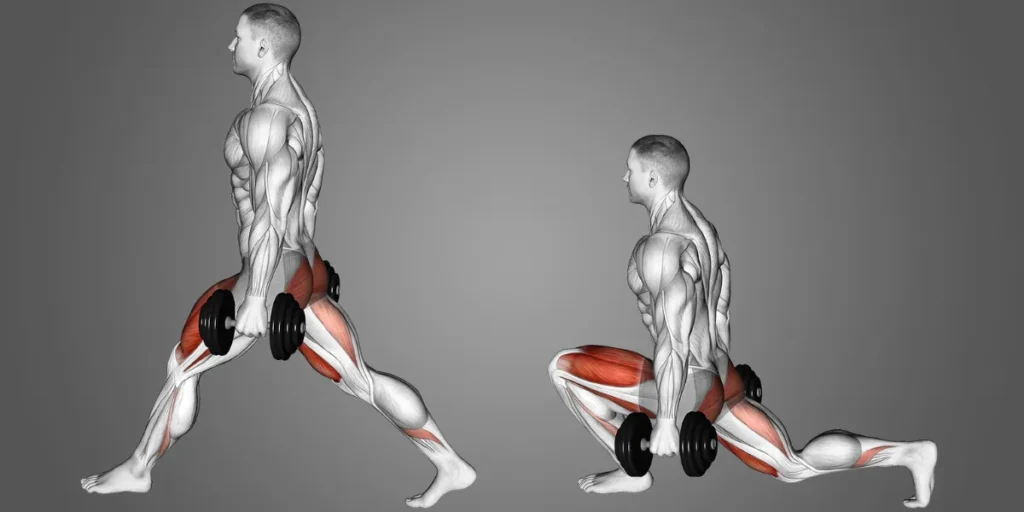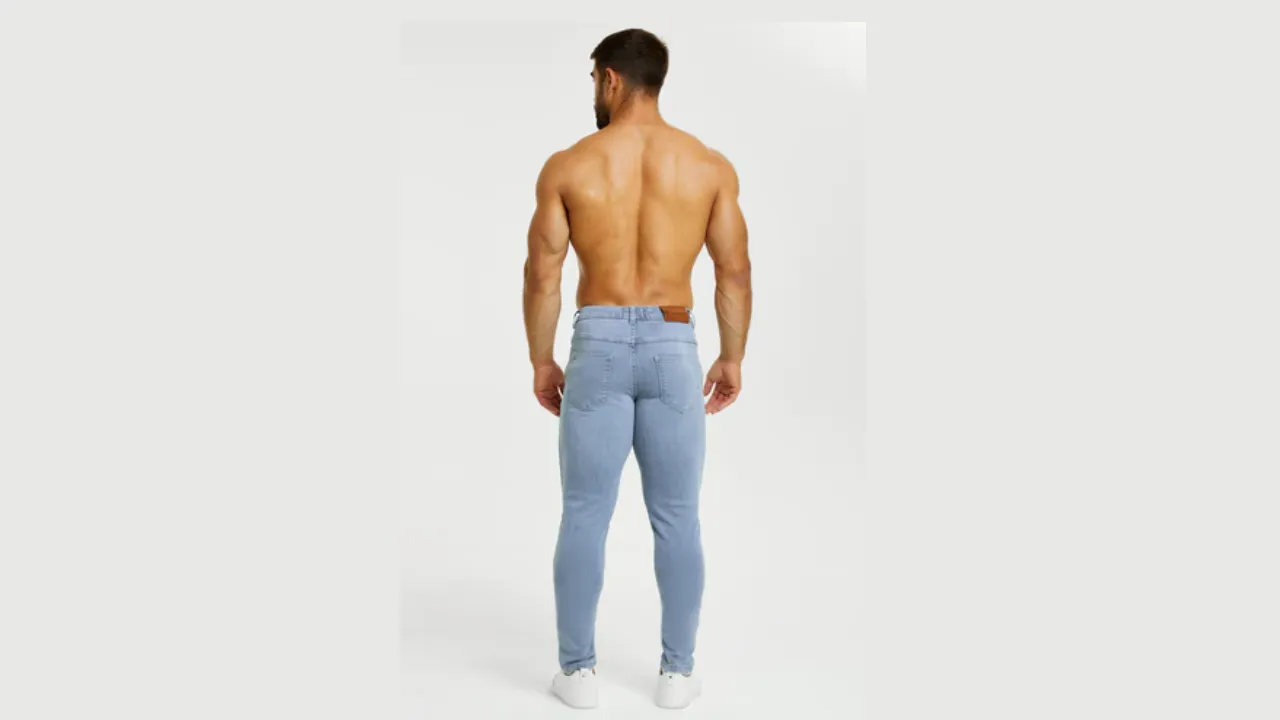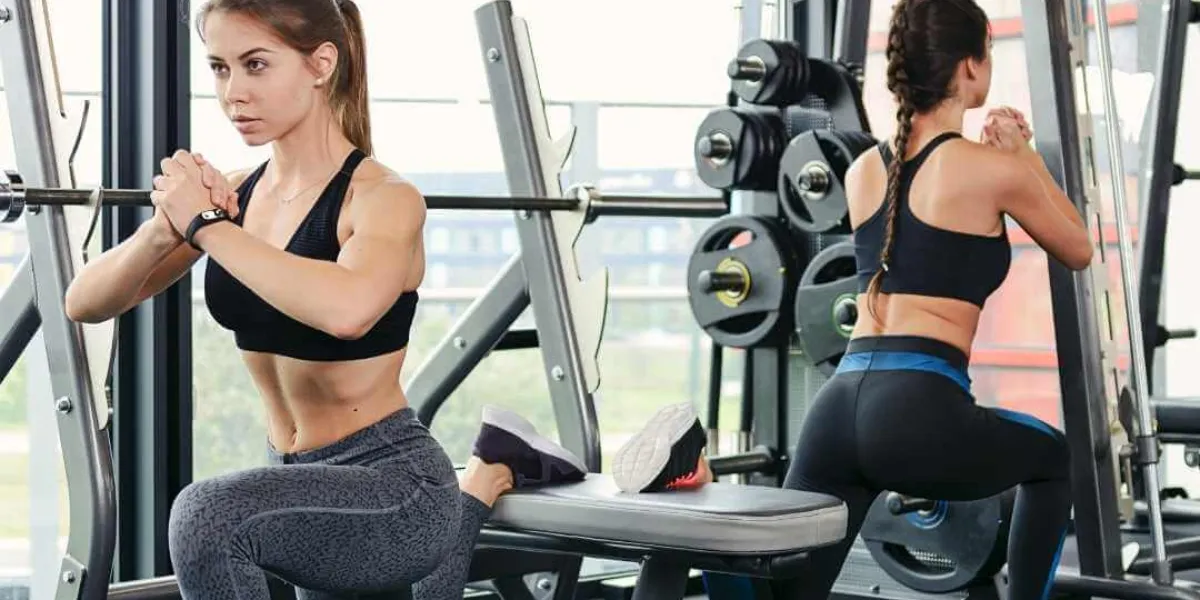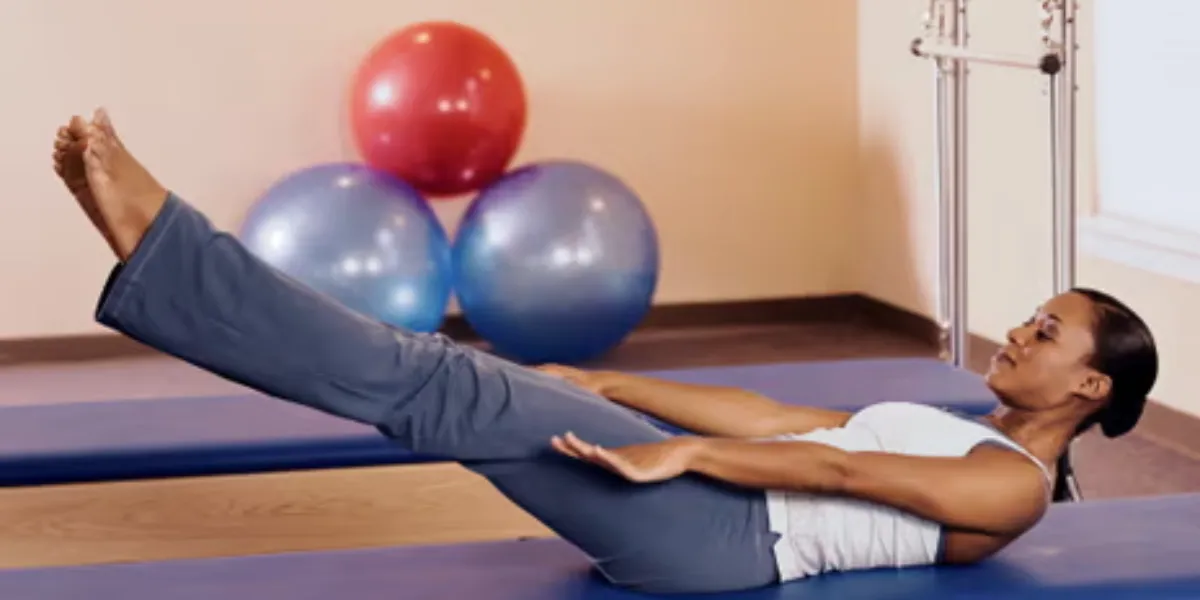The Bulgarian split squat, a unilateral exercise with a fierce reputation, has become a staple in leg workouts for athletes and gym-goers alike. But beyond the challenge it presents, what muscles exactly does this exercise target? This article will delve into the world of the split squat, exploring the primary and secondary muscle groups it works, along with the benefits it offers.
Table of Contents
TogglePrimary Movers: The Powerhouse Trio
The Bulgarian split squat is a compound exercise, meaning it works multiple muscle groups simultaneously. The three primary muscle groups targeted are:
- Quadriceps (Quads): These muscles on the front of your thighs are responsible for knee extension and play a dominant role in the downward movement of the squat.
- Glutes (Gluteus Maximus and Gluteus Medius): Your glutes are the largest muscles in your body, and they are crucial for hip extension and core stability. The Bulgarian split squat works both the Gluteus Maximus (main buttock muscle) and Gluteus Medius (outer hip muscle).
- Hamstrings: Located on the backside of your thighs, the hamstrings are responsible for knee flexion and hip extension. They play a supporting role during the Bulgarian split squat, particularly during the lowering phase.
Table 1: Primary Movers and Their Functions
| Muscle Group | Function |
|---|---|
| Quadriceps | Knee extension |
| Glutes (Gluteus Maximus & Gluteus Medius) | Hip extension, core stability |
| Hamstrings | Knee flexion, hip extension (supporting role) |
Foot Placement Nuance: Shifting the Focus
The way you position your front foot in a Bulgarian split squat can slightly alter which muscle group receives the most emphasis. Here’s a breakdown:
- Foot Closer to Elevated Surface: This position places more stress on your quads as they drive the upward movement.
- Foot Further from Elevated Surface: This positioning increases the activation of your glutes and hamstrings as they work harder to stabilize and extend the hip joint.
Remember, both variations are beneficial, so feel free to experiment and find what works best for your goals and body mechanics.
Secondary Supporters: Maintaining Balance and Stability
While the aforementioned muscles are the primary drivers of the Bulgarian split squat, several other muscle groups play a supporting role:
- Calves (Gastrocnemius and Soleus): These muscles in your lower legs help with ankle plantarflexion (pushing off the ground) during the upward movement.
- Core: Your core muscles, including your rectus abdominis (abs), obliques, and lower back muscles, work isometrically (holding a position) to maintain stability and prevent your torso from rotating throughout the exercise.
The Bulgarian Split Squat: A Boon for Your Workout Routine
Beyond its muscle-building prowess, the Bulgarian split squat offers a multitude of benefits:
- Improved Balance and Stability: The single-leg nature of the exercise challenges your balance and core engagement, translating to better overall stability in other activities.
- Reduced Lower Back Stress: Unlike traditional squats, which can put strain on the lower back, the split squat minimizes this stress, making it suitable for those with lower back issues.
- Strengthens Unilateral Power: Single-leg exercises like the split squat help identify and address weaknesses in one leg compared to the other, leading to more balanced and powerful movement.
- Increased Core Engagement: The need to maintain stability throughout the exercise strengthens your core muscles, improving overall posture and athletic performance.
Mastering the Bulgarian Split Squat: A Step-by-Step Guide
To reap the benefits of this exercise, proper form is crucial. Here’s a step-by-step guide to performing a Bulgarian split squat:
- Find a sturdy bench or chair. Ensure it’s high enough for your front knee to comfortably bend at a 90-degree angle when your foot is placed on it.
- Stand with your feet hip-width apart. Hold a dumbbell in each hand (optional) at your sides or rest a barbell across your upper back.
- Step back with one leg and place your foot on the bench or chair. Maintain a straight line from your head to your heels, with your core engaged and shoulders back.
- Lower your body down by bending both knees. Descend until your front thigh is parallel to the ground and your back knee nearly touches the floor. Keep your front heel flat on the ground throughout the movement.
- Push through your front heel to return to the starting position. Focus on using your glutes and quads to drive the movement upwards.
- Complete desired repetitions and then switch legs.
Tips for Proper Form:
Absolutely, here are some additional tips for proper form when performing the Bulgarian split squat:
- Maintain a neutral spine throughout the movement. Avoid arching your back or rounding your shoulders.
- Focus on pushing your knee out, not in. This keeps your knee tracking in line with your toes and prevents injury.
- Don’t let your front knee cave inward. This places unnecessary stress on your knee joint.
- Control the descent. Don’t simply drop down. Aim for a slow and controlled lowering phase.
- Keep your core engaged throughout the exercise. This will help maintain stability and prevent your torso from twisting.
- Start with no weight or body weight only. Once you’ve mastered the form, you can gradually add weight with dumbbells or a barbell.
- Listen to your body. If you experience any pain, stop the exercise and consult a healthcare professional.
Variations for All Levels:
The Bulgarian split squat can be adapted to suit various fitness levels:
- Bodyweight Bulgarian Split Squat: This is the basic variation, perfect for beginners to learn proper form and build foundational strength.
- Bulgarian Split Squat with Dumbbells: Adding dumbbells increases the resistance and challenges your muscles further.
- Bulgarian Split Squat with Barbell: This advanced variation is ideal for experienced exercisers looking to maximize strength gains.
- Bulgarian Split Squat with Deficit: Elevate your front foot on a platform to increase the range of motion and challenge your balance.
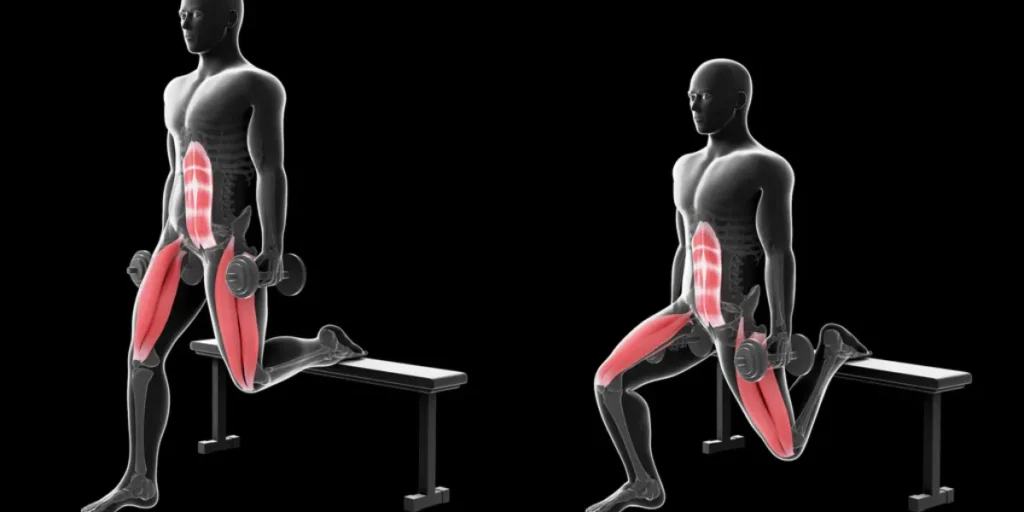
Conclusion
The Bulgarian split squat is a versatile and effective exercise that targets numerous muscle groups in your lower body and core. By incorporating this exercise into your workout routine with proper form and variations, you can unlock a multitude of benefits, from enhanced strength and stability to improved balance and core engagement. So, embrace the challenge, master the technique, and unleash your lower body potential with the Bulgarian split squat!
Bulgarian Split Squat FAQs
This FAQ section addresses some of the most common questions regarding the Bulgarian split squat:
What is a Bulgarian split squat?
The Bulgarian split squat is a single-leg exercise that targets your quads, glutes, hamstrings, and core. It’s a unilateral exercise, meaning you work one leg at a time.
How do I perform a Bulgarian split squat with proper form?
Here’s a quick breakdown:
- Find a sturdy bench or chair.
- Stand with feet hip-width apart, core engaged, shoulders back.
- Step back with one leg and place your foot on the bench.
- Lower down by bending both knees until your front thigh is parallel to the ground.
- Push through your front heel to return to starting position.
For detailed instructions and tips on proper form, refer to the main article.
What muscles does the Bulgarian split squat work?
The primary muscles targeted are quads, glutes (Gluteus Maximus and Medius), and hamstrings. Core muscles also play a supporting role in maintaining stability.
Can I use weights with Bulgarian split squats?
Absolutely! Bodyweight is a great starting point, but you can progress by adding dumbbells or a barbell.
Are Bulgarian split squats good for glutes?
Yes! By adjusting your foot placement, you can emphasize glute activation. Placing your front foot further from the bench increases glute and hamstring engagement.
Is there a difference between a Bulgarian split squat and a regular split squat?
A regular split squat can be performed with both feet on the ground, with a larger lunge step. The Bulgarian split squat elevates one foot behind you, increasing the challenge and single-leg focus.
Where can I find a tutorial for the Bulgarian split squat?
Many resources offer video tutorials. A simple web search for “Bulgarian split squat tutorial” will provide helpful demonstrations.
Are there different variations of the Bulgarian split squat?
Yes! Variations exist for all fitness levels. Bodyweight squats are a great starting point. You can progress to dumbbell or barbell variations, deficit squats (elevating your front foot), and Bulgarian split squat with DBs (dumbbells).
I have lower back problems. Can I still do Bulgarian split squats?
The Bulgarian split squat minimizes lower back stress compared to traditional squats. However, consult a healthcare professional before starting any new exercise program, especially if you have pre-existing injuries.
What’s the best way to target my quads with Bulgarian split squats?
Focus on keeping your torso more upright throughout the movement. This places greater emphasis on quadriceps extension.
I’m a beginner. What are some tips for starting with Bulgarian split squats?
- Master bodyweight squats with proper form before adding weight.
- Start with a lower bench or chair to ensure proper depth without straining.
- Focus on slow and controlled movements throughout the exercise.
- Don’t be afraid to ask a trainer or gym professional for guidance.

